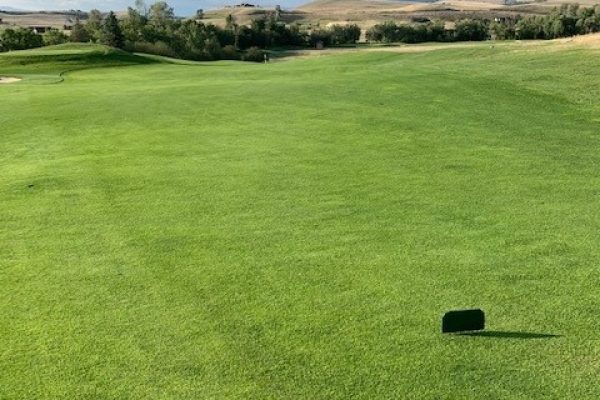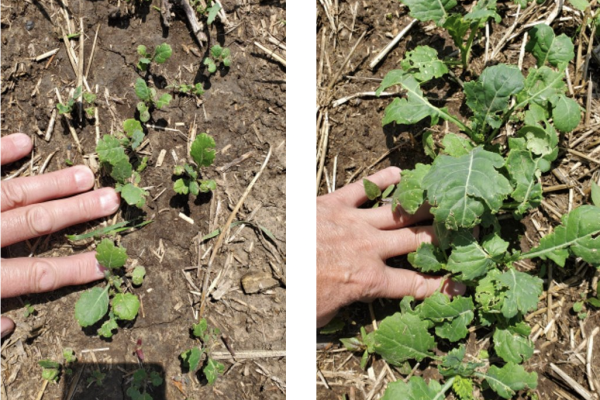Whether to fertilize in the fall is a question many growers ask themselves. Issues with tight crop margins and unpredictable weather patterns determine whether fall application is a logical option.
Because nitrogen (N) is a mobile nutrient, there are many opportunities to lose the effectiveness of that mineral over time. Phosphate (P), Potash (K), and Sulphur (S) are quite a bit more robust than Nitrogen (N) and can be applied in the fall or spring. So while it’s best to apply fertilizer as close as possible to when the plant needs it, farmers must decide what makes more sense for them.
Fall fertilizer application
Even as fertilizer products and application technologies continue to evolve, reasons to consider fall fertilization remain the same: it reduces the workload in spring, the price of nutrients is usually lower in the fall, and it minimizes winter storage risks.
The majority of a grower’s workload is concentrated in the spring. A fall fertilizer program helps to spread out a grower’s workload more evenly throughout the year and can substantially reduce the stress they feel come springtime. It can also substantially increase efficiencies to improve on-farm economics.
By applying fertilizer in the fall, growers will have more space in their tank for seed and other products in the spring, meaning they can go longer between fill-ups and wrap up seeding that much quicker.
Another logistical benefit of fall fertilizing is that once you’ve applied the product to your field, you no longer have to worry about subsequent industry shortages that could result in costly interruptions to spring seeding. It can also result in cost savings as fertilizer prices tend to be lower in fall than in spring.
An additional advantage of fall fertilizing is that soil is typically drier than in the spring. As a result, fertilizer applicators are much less likely to get stuck in any ruts created by moist soil conditions. Drier fall conditions also mean it’s easier to incorporate fertilizer rather than simply forcing it to sit on top.
Because the product can be on the field for six or seven months before the plant uses it, there’s more potential for something to go wrong, such as leaching or denitrification. You can also lose some of the product to wind and environmental conditions, although most standards consider those losses acceptable.
Replenish Nutrients products are mineral form, hydrophobic materials limited to leaching and evaporation, so there’s less concern for spring moisture and saturation stripping the nutrients away. Our products contain active biology, which goes dormant over the winter and then comes alive in the spring to start providing nutrients for immediate uptake by the crop.
Spring fertilizer application
Fertilizers provide the nutrients plants need to grow, form healthy foliage, establish a strong root system, and fight diseases and insects. Plants benefit from fertilizer applications most when they’re in their peak growth, and spring is one of those times.
Applying spring inputs provides advantages of early crop growth, drier grain at harvest time, and less mineral runoff. Spring fertilizer applications provide the essential nutrients throughout the plant’s growth stages, ensuring the plant has the nutrients necessary to produce optimal yield.
Springtime has many elements that a grower must deal with to plant their crops for the year. These elements consist of timing, weather, machine, and field preparation. Replenish Nutrients products are flexible and can be applied pre or post-seeding – alleviating workload and stress during this already busy time.
What growers should be aware of
With fertilizer prices trending higher and supplies tighter, farmers should talk with their local fertilizer dealers to ensure they’re applying the right source, at the right rate, in the right form, and at the right time.
Timing is everything.
Wait until the soil has sufficiently cooled before applying any fertilizer in the fall. If you apply it when the soil is still too warm, you run the risk of the nitrogen you’re applying converting into other forms and are more likely to see leaching or denitrification.
Soil test before you fertilize.
Instead of using traditional measurements of “what’s always been done,” consider soil testing before applying any post-harvest fertilizer. Soil tests give growers a much clearer idea about soil levels, what to apply, and how much of it. It also helps with costly inputs before spending fertilizer dollars on unnecessary nutrients.
Choose the right fertilizer product.
While there are many options, it’s important to remember to choose the right product to ensure you gain the most benefit. Start by speaking to your agronomist for advice on choosing the right product. The composition of Replenish Nutrients products benefits all seasons, giving you the flexibility to decide what’s right for your fertilizer program.
Save time and money
Regardless of when you plan to fertilize, farmers might also consider purchasing at least some portion of next season’s fertilizer requirements in the fall. The seasonality of fertilizer prices shows large advantages for fall fertilizer purchases compared to spring purchases. It’s not a risk-free strategy, but it alleviates many potential issues.
Let Replenish Nutrients be the positive catalyst for the growth of your crops. The flexible application of Replenish Nutrients products gives back control so you can decide what’s best for your business. Contact a Replenish Nutrients representative today.


